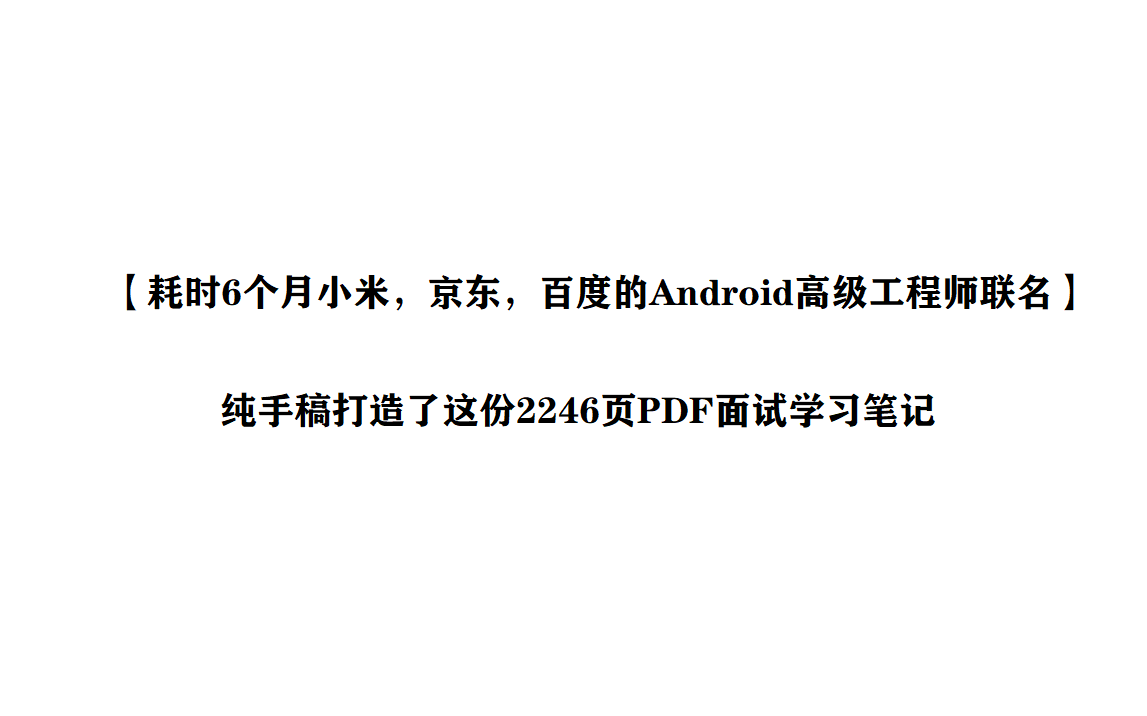map.get(1); //访问1
map.get(2); //访问2
for (Map.Entry<Integer, Integer> entry : map.entrySet()) {
System.out.println(entry.getKey() + ":" + entry.getValue());
}
}
输出结果如下:
0:0
3:3
4:4
5:5
6:6
1:1
2:2
即最近访问的对象会被放到队尾,然后最后输出,那么这就正好满足的LRU缓存算法的思想。可见**LruCache**巧妙实现,就是利用了**LinkedHashMap**的这种数据结构。
下面我们在**LruCache**源码中具体看看,怎么应用**LinkedHashMap**来实现缓存的添加,获得和删除的。
#### LruCache源码分析
我们先看看成员变量有哪些:
public class LruCache<K, V> {
private final LinkedHashMap<K, V> map;
/** Size of this cache in units. Not necessarily the number of elements. */
private int size; //当前cache的大小
private int maxSize; //cache最大大小
private int putCount; //put的次数
private int createCount; //create的次数
private int evictionCount; //驱逐剔除的次数
private int hitCount; //命中的次数
private int missCount; //未命中次数
//...省略...
}
构造函数如下,可以看到**LruCache**正是用了**LinkedHashMap**的**accessOrder=true**构造参数实现LRU访问顺序:
public LruCache(int maxSize) {
if (maxSize <= 0) {
throw new IllegalArgumentException(“maxSize <= 0”);
}
this.maxSize = maxSize;
//将LinkedHashMap的accessOrder设置为true来实现LRU顺序
this.map = new LinkedHashMap<K, V>(0, 0.75f, true);
}
##### put方法
public final V put(K key, V value) {
//不可为空,否则抛出异常
if (key == null || value == null) {
throw new NullPointerException(“key == null || value == null”);
}
V previous; //旧值
synchronized (this) {
putCount++; //插入次数加1
size += safeSizeOf(key, value); //更新缓存的大小
previous = map.put(key, value);
//如果已有缓存对象,则缓存大小的值需要剔除这个旧的大小
if (previous != null) {
size -= safeSizeOf(key, previous);
}
}
//entryRemoved()是个空方法,可以自行实现
if (previous != null) {
entryRemoved(false, key, previous, value);
}
//调整缓存大小(关键方法)
trimToSize(maxSize);
return previous;
}
可以看到\*\*put()**方法并没有什么难点,重要的就是在添加过缓存对象后,调用**trimToSize()\*\*方法,来判断缓存是否已满,如果满了就要删除近期最少使用的算法。
##### trimToSize方法
public void trimToSize(int maxSize) {
while (true) {
K key;
V value;
synchronized (this) {
//如果map为空并且缓存size不等于0或者缓存size小于0,抛出异常
if (size < 0 || (map.isEmpty() && size != 0)) {
throw new IllegalStateException(getClass().getName()
+ “.sizeOf() is reporting inconsistent results!”);
}
//如果缓存大小size小于最大缓存,或者map为空,则不需要再删除缓存对象,跳出循环
if (size <= maxSize || map.isEmpty()) {
break;
}
//迭代器获取第一个对象,即队头的元素,近期最少访问的元素
Map.Entry<K, V> toEvict = map.entrySet().iterator().next();
key = toEvict.getKey();
value = toEvict.getValue();
//删除该对象,并更新缓存大小
map.remove(key);
size -= safeSizeOf(key, value);
evictionCount++;
}
entryRemoved(true, key, value, null);
}
}
**trimToSize()**方法不断地删除**LinkedHashMap**中队头的元素,即近期最少访问的,直到缓存大小小于最大值。
当调用**LruCache**的**get()**方法获取集合中的缓存对象时,就代表访问了一次该元素,将会更新队列,保持整个队列是按照访问顺序排序。这个更新过程就是在**LinkedHashMap**中的\*\*get()\*\*方法中完成的。
我们先看LruCache的get()方法。
##### get方法
//LruCache的get()方法
public final V get(K key) {
if (key == null) {
throw new NullPointerException(“key == null”);
}
V mapValue;
synchronized (this) {
//获取对应的缓存对象
//LinkedHashMap的get()方法会实现将访问的元素更新到队列尾部的功能
mapValue = map.get(key);
//mapValue不为空表示命中,hitCount+1并返回mapValue对象
if (mapValue != null) {
hitCount++;
return mapValue;
}
missCount++; //未命中
}
/*
* Attempt to create a value. This may take a long time, and the map
* may be different when create() returns. If a conflicting value was
* added to the map while create() was working, we leave that value in
* the map and release the created value.
* 如果未命中,则试图创建一个对象,这里create方法默认返回null,并没有实现创建对象的方法。
* 如果需要事项创建对象的方法可以重写create方法。因为图片缓存时内存缓存没有命中会去
* 文件缓存中去取或者从网络下载,所以并不需要创建,下面的就不用看了。
*/
V createdValue = create(key);
if (createdValue == null) {
return null;
}
//假如创建了新的对象,则继续往下执行
synchronized (this) {
createCount++;
//将createdValue加入到map中,并且将原来键为key的对象保存到mapValue
mapValue = map.put(key, createdValue);
if (mapValue != null) {
// There was a conflict so undo that last put
//如果mapValue不为空,则撤销上一步的put操作。
map.put(key, mapValue);
} else {
//加入新创建的对象之后需要重新计算size大小
size += safeSizeOf(key, createdValue);
}
}
if (mapValue != null) {
entryRemoved(false, key, createdValue, mapValue);
return mapValue;
} else {
//每次新加入对象都需要调用trimToSize方法看是否需要回收
trimToSize(maxSize);
return createdValue;
}
}
其中**LinkedHashMap**的\*\*get()\*\*方法如下:
//LinkedHashMap中的get方法
public V get(Object key) {
Node<K,V> e;
if ((e = getNode(hash(key), key)) == null)
return null;
//实现排序的关键方法
if (accessOrder)
afterNodeAccess(e);
return e.value;
}
调用的\*\*afterNodeAccess()\*\*方法将该元素移到队尾,保证最后才删除,如下:
void afterNodeAccess(Node<K,V> e) { // move node to last
LinkedHashMap.Entry<K,V> last;
if (accessOrder && (last = tail) != e) {
LinkedHashMap.Entry<K,V> p =
(LinkedHashMap.Entry<K,V>)e, b = p.before, a = p.after;
p.after = null;
if (b == null)
head = a;
else
b.after = a;
if (a != null)
a.before = b;
else
last = b;
if (last == null)
head = p;
else {
p.before = last;
last.after = p;
}
//当前节点p移动到尾部之后,尾部指针指向当前节点
tail = p;
++modCount;
}


CodeChina开源项目:《Android学习笔记总结+移动架构视频+大厂面试真题+项目实战源码》
tail = p;
++modCount;
}
[外链图片转存中…(img-CrMzAZR6-1630507997475)]
[外链图片转存中…(img-VP3Jfc1v-1630507997477)]